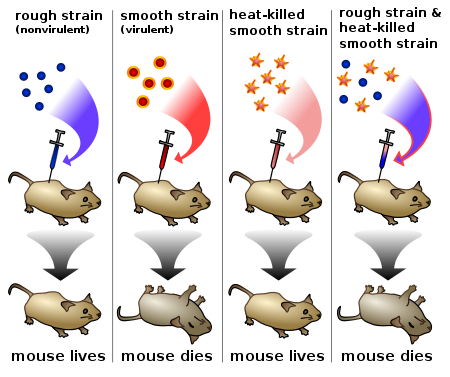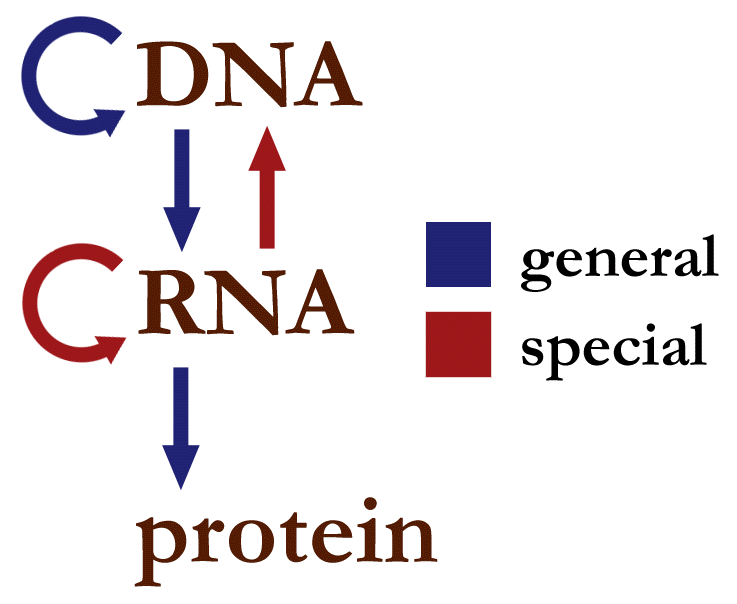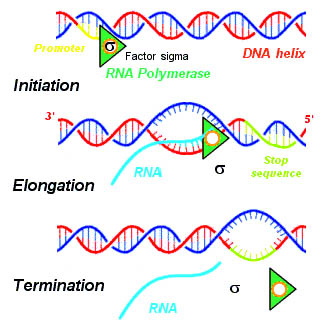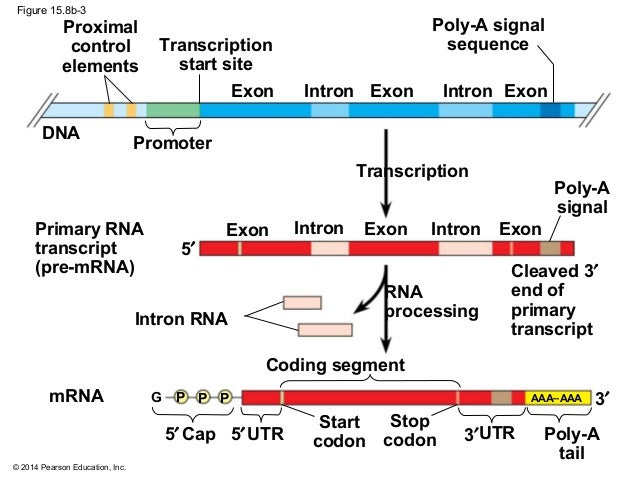Name: ________________________________________
Class: ______________________ Topic:
BIOTECHNOLOGY & ITS APPLICATIONS
Date: _______/ _____/ ________
Period ______
|
|
QUESTIONS
|
NOTES
|
AGRICULTURE
|
|
|
|
Bacillus thuringiensis produces a protein that
kills certain insects: lepidopterans (tobacco budworm, army worm),
coleopterans (beetles), dipterans (flies, mosquito)
|
|
Bacillus thuringiensis form protein crystals that
are insecticidal
|
|
In Bacillus – present as inactive protein – protoxin
|
|
Inside insect gut, at alkaline pH, gets
converted to active toxin
|
|
Active toxin binds to surface of epithelial lining of
insect gut, forms pores, causes swelling, cells lysis, death of insect.
|
|
Genes for Bt toxin cry – 3 types:
Cry IAc & cry II Ab for cotton bollworms
Cry I Ab for corn borer
|
|
The gene introduced in cotton using Ti plasmid
|
|
|
|
Meloidegyne incognita (Nematode) infects roots of
tobacco & damages plants
|
|
RNA interference – not allowing expression of mRNA by
creating a dsRNA
|
|
dsRNA can be made by making a complementary strand of RNA,
which binds to mRNA – RNA silencing
|
|
What are transposons?
Genes that are able to chang their position, replicate
through RNA intermediate
|
In our body it occurs as a method of cellular defense –
introduced by infecting viruses or transposons (jumping genes)
|
To control nematodes infection – nematode genes introduced
in tobacco (host)
|
|
Host makes both sense antisense RNA for these genes
|
|
The 2 RNAs being complementary bind to nematode RNA &
do not allow it to express – silencing
|
|
Nematode not able to survive in host
|
|
MEDICINE
|
|
|
|
Structure of Insulin: Proinsulin – 3 peptides (A, B, C)
In mature Insulin: C
removed. A & B remain
Company: Eli Lily
Technque: E. coli populations
1 with gene for A peptide
2 with gene for B peptide
separately formed A& B
isolated and joined together by disulfide bridges in
vitro
|
|
|
|
Adenosine Deaminase deficiency (ADA deficiency)
|
|
ADA enzyme – for immune system
|
|
Disease due to defective Gene for Adenosine deaminase
(ADA)
|
|
Problem: Lmphocyte not able to fight diseases (defective)
|
|
Cure:
Problem: Lymphocyte die. So need
to be replaced periodically
|
|
Permanent cure: Genetic engineering of bone marrow cells
(that form lymphocyte)
|
|
|
|
ELISA : enzyme linked immunosorbent assay
Based on antigen antibody interaction
|
|
PCR: can detect very low amount of DNA
|
|
a-1-antitrypsin: used to cure emphysema
Also cure for phenyl ketonuria & Cystic fibrosis
Transgnic Cow (Rosie) protein rich milk (2.4gm/l);
human alpha lactalbumin enriched
|
Transgenic Animals: Advantages
|
What is Biopiracy?
|
GEAC: Genetic Engineering Approval Committee: Indian
committee for check on Genetic research
Indian patents Bill
Attempts at Biopiracy: Basmati Rice, Neem, Turmeric
|
SUMMARY: Write 4 or more sentences describing
specific learning from these notes.
__________________________________________________________________________________________
__________________________________________________________________________________________
__________________________________________________________________________________________
__________________________________________________________________________________________
__________________________________________________________________________________________
|
|
Study Material for Biology, Secondary & Senior Secondary Levels, Practice Questions, Question Papers (Solved & Unsolved) Study Techniques & Exam Preparation Tips Post queries/suggestions in comments
Tuesday, 16 January 2018
Biotechnology & Its Applications: Key points
Thursday, 11 January 2018
KEY POINTS ORGANISMS AND POPULATION PART 1
Saturday, 26 August 2017
Evolution: Key Questions
1.
A. What is adaptive radiation? How does it contribute
to biodiversity?
B. Correlate adaptive radiation
with divergent and convergent evolution.
Adaptive radiation is the
evolutionary process by which many species originate from one species in an
area and radiate to different areas.
Discovery: First observed by
Darwin
Darwin traveled to a place called
the Galapagos Island. There he observed that there were finches with different
types of beaks. So, he concluded that all of these finches radiated on the same
island from a single ancestor finch. All of these finches developed beaks
according to the kind of food available to them. Hence, they evolved from the
conventional seed-eating finches to vegetarian and insectivorous
finches. They later came to be known as Darwin’s finches.
Cause: According to evolutionary
theory, living organisms change their physical and anatomical structure over a
long period of time for better adaptations to the changing environment. The
initiation of the point of evolution was when organisms wanted to exploit a
niche and they were not able to do so with their existing body design or
structural component. Organisms started to split and adopt various versions for
better survival.
Adaptive Radiation and
Biodiversity
Adaptive radiation explains the
reason for biodiversity. Organisms with same parents and origin, grow under
same circumstances and moved to different regions for a better opportunity. Now
each one of them has their own adaptation according to their lifestyle and
place they stay. Here the lineage splits and radiates different
characteristics giving rise to differently adapted organisms. This may lead to
formation of new species and hence increase in biodiversity.
Adaptive radiation and divergent
evolution: Divergent evolution means development of varied individuals from
common ancestral stock; from which a number of species arise. Example development
of different Australian Marsupials from a single ancestral stock in the
Australian subcontinent. Thus if species from an area migrate to different
areas and evolve in different directions (adaptive radiation) it is known as
divergent evolution.
Adaptive radiation and convergent
evolution: If in a given geographical area, several adaptive radiations take
place for various species, leading to development of similar characters in
those species; it gives rise to convergent evolution.
Saturday, 22 July 2017
6.MOLECULAR BASIS OF INHERITANCE
DEOXYRIBONUCLEIC ACID
(DNA)
(DNA)
•DNA is the long
polymer of deoxyribonucleotide.
•Its length is
defined as the number of nucleotide or base
pairs.
•The number of base
pairs is the characteristics of every organisms.
•Ex.Ф 174 ----5386 bp
• Lambda phage----48502 bp
• Escherichia coli ----4.6X1O6 bp
•Human
being------------3.3x 109 bp(haploid cell)
•DNA was discovered by FREDERICH MEISCHER(1869) as an acidic substance in the
nucleus , he called it nuclein.
Structure
of polynucleotide chain of DNA
•DNA
is the largest macromolecule made of helically twisted, two, antiparallel polydeoxyribonucleotide chains held together
by hydrogen bonds.
• X-ray diffraction
pattern of DNA by Rosalind Franklin showed DNA a helix.
•Components of DNA
are (i) deoxyribose sugar, (ii) a phosphate, and (iii)
nitrogen containing organic bases.
•DNA contains four
different bases called adenine (A), guanine (G) cytosine (C), and thymine (T).
•These are grouped
into two classes on the basis of their chemical structure: (i) Purines (with a double ring structure) and (ii) Pyrimidines (with a single ring structure)
•1953.James Watson
and Francis Crick proposed three
dimensional structure of DNA
•DNA double helix
with sugar phosphate back bone on outside and paired bases inside.
•Planes of the bases
perpendicular to helix axis.
•Each turn has ten base
pairs.( 34 A0)(3.4nm)
•Diameter of helix 20 A0
•Ten base pairs in each turn with 0.34nm between two base pairs.
•The length of DNA in E.coli-----------1.36 mm
•The length of DNA in
Man -----------2.2m
•Two strands of DNA
antiparallel.
•DNA found both in
nucleus and cytoplasm.
•Extranuclear DNA found in mitochondria and
chloroplasts.
•Two chains
complementary
•Two chains held
together by hydrogen bond.
•Adenine-Thymine
pair has two hydrogen bonds.
•Guanine-Cytosine
pair has three hydrogen bonds.
•Upon heating at
temperature above 80-90 degree two strands uncoil and separate (Denaturation)
•On cooling two
strands join together (renaturation /annealing)
•DNA is mostly right
handed and B form.
•Bacterial nucleoid consists of a single circular DNA molecule .
PACKAGING
OF DNA HELIX
•DNA of eukaryotes is wrapped around
positively charged histone proteins to form nucleosome.
•#
Nucleosome contains 200 base pairs of DNA helix.
•# Histone octamer =2(H2a+H2b+H3+H4)
•# Linker DNA bears H1 protein
•# Chromatin fibres formed by repeated units of nucleosomes.
•# Non histone proteins required
for packaging.
•# Regions of chromatin, loosely packed
and stains lightly called euchromatin.
•# Regions of chromatin, densely packed
and stains darkly is called heterochromatin.
DNA
AS THE GENETIC MATERIAL
•Transformation
experiment or Griffith effect.
•• Griffith performed his experiments on Mice
using Diplococcus pneumoniae.
•• Two strains of bacteria are
S-type and R-type cells.
•• Experiments
•v Living S-strain Injected into mice →Mice
killed
•v Living R-strain Injected into mice
→ Mice lived
•v Heat Killed S-strain Injected into mice
→ Mice lived
•v Living R-strain + Heat Killed
S-strain Injected into mice→ Mice killed
•#
Griffith concluded that R type bacteria
is transformed into virulent form.
•# Transformation
is the change in the genetic constitution of an organism by picking up genes
present in the remains of its relatives.
•BIOCHEMICAL
CHARACTERISATION OF TRANSFORMING PRINCIPLE
•# Proved by Oswarld Avery, Colin Macleod, Maclyn Mc Carty
• From this we conclude that DNA is the
genetic material.
Alfred
Hershey and Martha Chase Experiment(1952)
•They made two different preparation of
bacteriophage , in one the DNA was
made radioactive with 32P AND the
other the protein coat was made
radioactive with 35S.
•These two preparation were allowed to
infect the bacterial cell separately.
•Soon after the infection the cultures
were gently agitated in a blender to separate the adhering protein coats of the
virus from the bacterial cell.
•The culture centrifuged to separate the
viral coat and the bacterial cells
•It was found that when the phage
containing radioactive DNA was used to infect bacteria, its radioactivity was
found in the bacterial cells(in the sediment) indicating that the DNA has been
injected into the bacterial cell
•So DNA is the genetic
material not proteins.
Characteristics
of genetic material
•Genetic material
must have the following properties.
•It should be able
to generate its own replica.
•It should be
chemically and structurally stable.
•It should
provide the scope for slow changes(mutation) that is necessary
for evolution.
•It should be able
to express itself in the form of Mendelian characters
•Nucleic acid can
replicate but not protein.
•Major genetic
material is DNA, but viruses like TMV have RNA as the genetic
material.
The 2’ –OH in the nucleotide of RNA is a reactive group and make the RNA liable and easily degradable, RNA is more
reactive and hence DNA has the property to be the genetic material
Replication
of DNA In Eukaryotes
•Definition:
"Process by which DNA produces daughter DNA molecules which are exact
copies of the original DNA.“
• In eukaryotes,
DNA is double stranded. The two strands are complementary to each other because
of their base sequences.
• Semi-conservative
method of DNA replication
Semi conservative nature of DNA Mathew Messelson and Franklin Stahl
•E.coli
•Grown
on 15 NH4Cl
culture medium
•Both
strands of DNA have 15N (N15 N 15)
•Shifted
to 14NH4Cl
culture medium
• DNA extracted
subjected to CSCl density gradient
centrifugations
•After
20 minutes- Hybrid/
Intermediate type of DNA (N15 N14)
• After 40 minutes
-Equal amount of light DNA (N14 N14) and hybrid DNA (N15 N14)
Important
points:
•i) Most common method of DNA
replication.
•(ii) Takes place in
the nucleus where the DNA is present in the chromosomes.
•(iii) Replication
takes place in the S-phase (synthesis phase) of the interphase nucleus.
(iv) Deoxyribose
nucleotides needed for formation of new DNA strands are present in nucleoplasm.
•At the time of replication, the two
strands of DNA first separate.
• Each strand then acts as a template for the formation of a new strand.
•A new strand is constructed on each old
strand, and two exactly identical double stranded DNA molecules are formed.
• In each new DNA molecule, one strand is old (original) while the other is newly formed. Hence, Watson and Crick described
this method as semi-conservative
replication.
• An overall process of DNA replication showing replication fork and
formation of new strands template and lagging template.
•The
various steps involved in this process are summarized as follows:
•i.
Mechanism of replication starts at a specific point of the DNA molecule,
called origin.
•ii. At origin, DNA
strand breaks because of an incision (nick). This is made by an enzyme called incision enzyme (endonuclease).
•iii. The hydrogen
bonds joining the two strands are broken by the enzyme.
•iv. The two
strands start unwinding. This takes place with the help of a DNA unwinding enzyme Helicases. Two polynucleotide strands are thus
separated.
•v. The point where the
two strands separate appears like a fork or a Y-shape.
This is described as a replicating
fork.
•vi. A new strand is constructed on each
old strand.
This takes place with the help of a small RNA primer molecule which is complimentary to the
DNA at that point.
•vii. Each old DNA strand acts as a template (site) for the construction of new
strand.
The RNA primer attaches
itself to the old strand and attracts the enzymes(DNA polymerase III) which add new nucleotides through base
complementation.
•The deoxyribose nucleotides are
present in the surrounding nucleoplasm. New DNA strand
is thus constructed opposite to each old strand.
•viii. Formation of
new complementary strand always begins at the 3' end of the template strand
(original strand) and progresses towards the 5' end (i.e in 3' - 5' direction).
Since the new strand is antiparallel to the template strand, it is obvious that the new strand itself is
always developed in the, 5'-3' direction.
For this reason when the two
original strands separate (then with respect to the origin of separation), one
acts as 3'-5' template while the other acts as 5'- 3' template.
•ix. Of the two, the replication of
3'-5' template begins first.
•Hence the new strand formed on it is
called the leading strand.
• The other template (5'-3') must begin
replication at the fork and progress back toward the previously transcribed
fragment.
• The new strand formed on it is called
the lagging strand.
•x. Replication of the lagging strand
takes place in small fragments called Okazaki fragments.
• These are then connected together by
the enzyme ligase.
•xi. Replication may take place in only
one direction on the DNA helix (unidirectional) or in two directions
(bidirectional).
•xii. At the end of the process, two
double stranded DNA molecules are formed from the original DNA molecule.
Central
dogma of molecular biology
RNA WORLD .
RNA was the first genetic material.
There are three types of RNA
1.Messenger RNA(m RNA ). –It bring the genetic information of DNA
transcribed on it for protein synthesis. It is
single stranded.
2.Transfer RNA/soluble RNA. It act as an adaptor molecule
that reads the code on one hand and bind to the specific amino acid on the other hand.
3.tRNA has a clover
leaf like secondary structure
It has
an amino acid acceptor end at 3’ and an
“ anticodon-loop,where the three bases are
complimentary to the bases of the codon of the purticular aminoacid.
4. Ribosomal RNA (r RNA ) –It forms the structure of ribosomes.
●
•ANTICODON
:- The sequence of nitrogenous bases on RNA that is complementary to the codon for particular amino
acid.
•CODON
:- It is a sequence of three nitrogenous bases on m-RNA that code for a
particular amino acid.
•TEMPLATE
STRAND
•1. The DNA strand that
has the polarity 3‘→5‘ acts as template during transcription is called as
template strand.
• 2. It is also called as master strand
or (-) or sense strand.
• 3. This takes part in transcription.
•CODING
STRAND
•1. The strand which has polarity of
5‘→3‘ is called as codon strand.
• 2. It is called (+) because genetic
code present in this strand is similar to genetic code (based on mRNA). Thymine is replaced by uracil in m RNA.
• 3. This does not take part in
transcription.
Transcription in Prokaryotes
•In prokaryotes the
structural genes are polycistronic and continuous.
•In prokaryotes
there is a single DNAdependent RNA polymerase,that catalyse the transcription of all the three types of RNA( m RNA, t RNA
, r RNA ).
Initiation.
•RNA polymerase
binds to the promoter and initiates the process along with certain initiating
factors.
•It uses ribonucleoside triphosphate for polymerisation on a DNA.
Elongation.
•The enzyme
facilitates the opening of the DNA-helix and elongation continues.
Termination.
•Once the RNA
polymerase reaches the terminator , the RNA polymerase falls off and the
nascent RNA separates. It is called termination of transcription.
•It is facilitated
by certain termination factors
•In prokaryotes m
RNA SYNTHESISED does not require any processing to become active.
•Both transcription
and translation occur in the same cytosol.
•Transcription and
translation can be coupled(translation can start much before the m RNA is fully
transcribed.)
Transcription in Eukaryotes
•In eukaryote the
structural genes are monocistronic and split.
•They have coding
sequences called EXONS that forms part
of a m RNA and non coding sequences called INTRONS, that do not form the part
of m RNA and are removed during
splicing.
•In Eukaryotes
three different RNA polymerases.
•1.RNA polymerase-I
– Transcribes r RNAs
•2.RNA
polymerase-II– Transcribes the precursor of m RNA (HETEROGENOUS NUCLEAR
RNA(hn RNA).
•3.RNA polymerase
–III- It catalyses the transcription of t RNA.
•SPLICING :- The
process in eukaryotic genes by which the introns are removed and the exons are joined together to form m-RNA.
•The hn RNA undergoes two
additional processes called capping and tailing
•In capping ,methyl guanosine triphosphate is added to the 5’
end of hn RNA .
•In tailing ,adenylate residues(200-300) are
added at the 3’ end of hn RNA.
•The fully processed hn RNA is called m RNA
and is released from the nucleus into the cytoplasm.
Coming Up Genetic Code and Translation
Subscribe to:
Comments (Atom)











